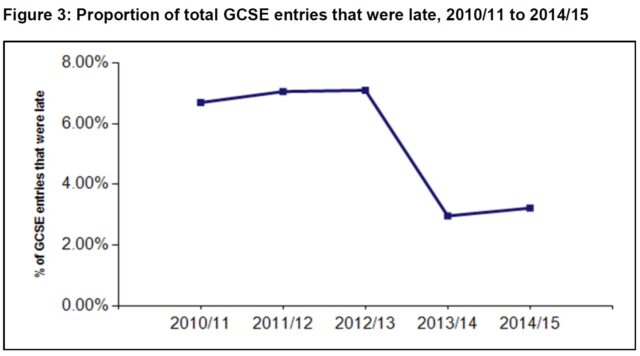Ofqual has this morning published figures on the number of late GCSE and AS/A-level entries for this summer’s exam series.
Schools and colleges are given deadlines by which exam entries need to be made. Those made after that date are classed as “late” and are subject to an extra charge by the exam board.
The move to linear exams and the change in accountability measures, so that only the first entry counts in league tables, continues to have an impact on the figures.
Below are some of the main points.
1. There were over half a million late entries in 2014/15 for GCSEs.
The total number of late entries for GCSEs was 547,200. This is a 7.2 per cent increase on last year, but still markedly down on 2012/13 when there was almost 1.3 million late entries.
Ofqual said in its analysis: “The main contributing factor for this is likely to be the linearisation of GCSEs in England from 2013/14, so that candidates took all of their exams at the end of the programme of study. The reduction in the number of exam series is likely to have enabled centres to better manage entries for their candidates.”
2. Schools and colleges have continued to improve in entering pupils on time for A-level exams.
The number of late entries is at a five-year low.
3. There was a huge 79 per cent increase in the number of late entries to GCSEs run by exam board Pearson.
The number of late entries to AQA (the most popular board) remained stable, although it still had the highest proportion of late entries, at 4.14 per cent.
4. At A-level, there is a slightly different story. AQA saw the biggest rise in late entries – again, a 79 per cent increase, from 27,900 to 50,000.
OCR entries appear to have had the biggest impact on the declining number of late entries overall, there were 60 per cent fewer late entrants to OCR exams.
What caused the changes? Any thoughts, please email us at news@schoolsweek.co.uk.
And look out for further analysis in this week’s printed edition of Schools Week











Your thoughts